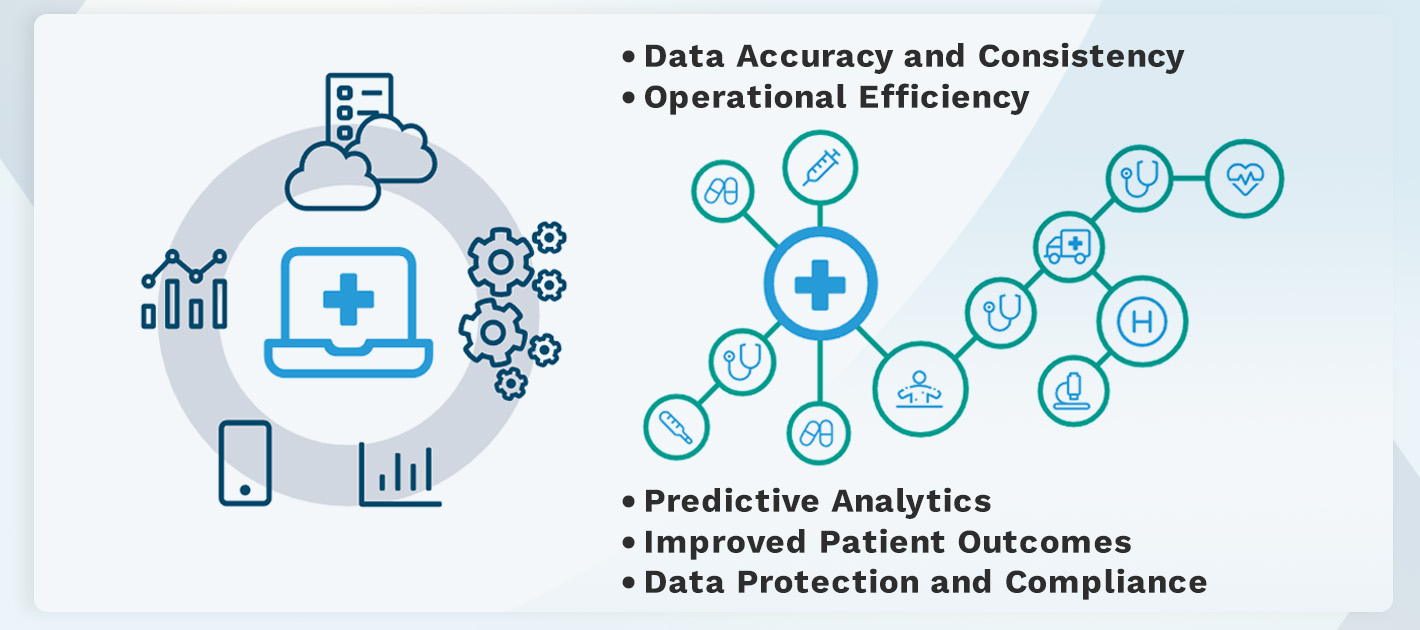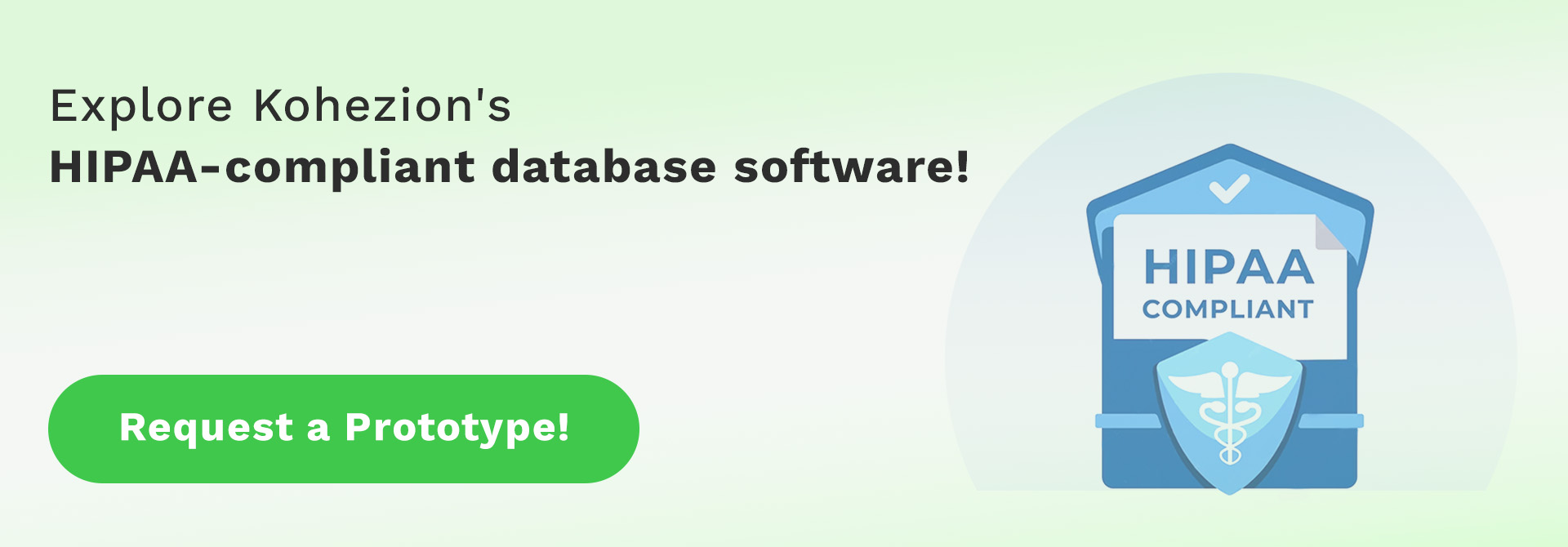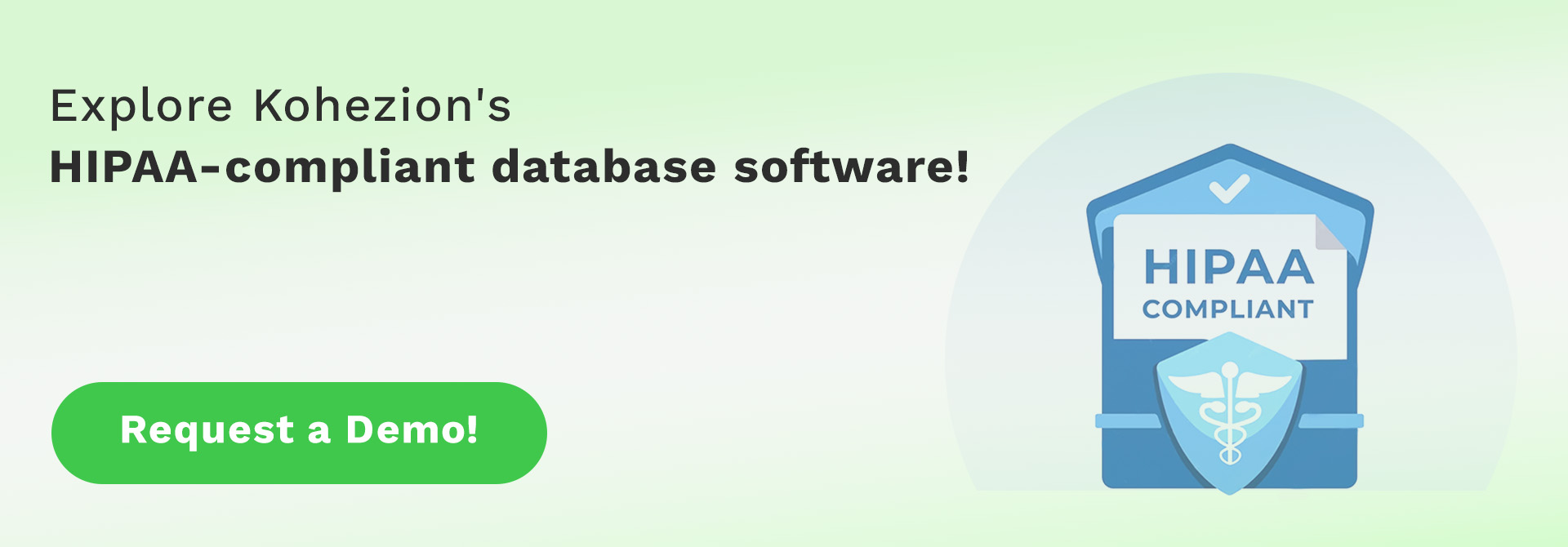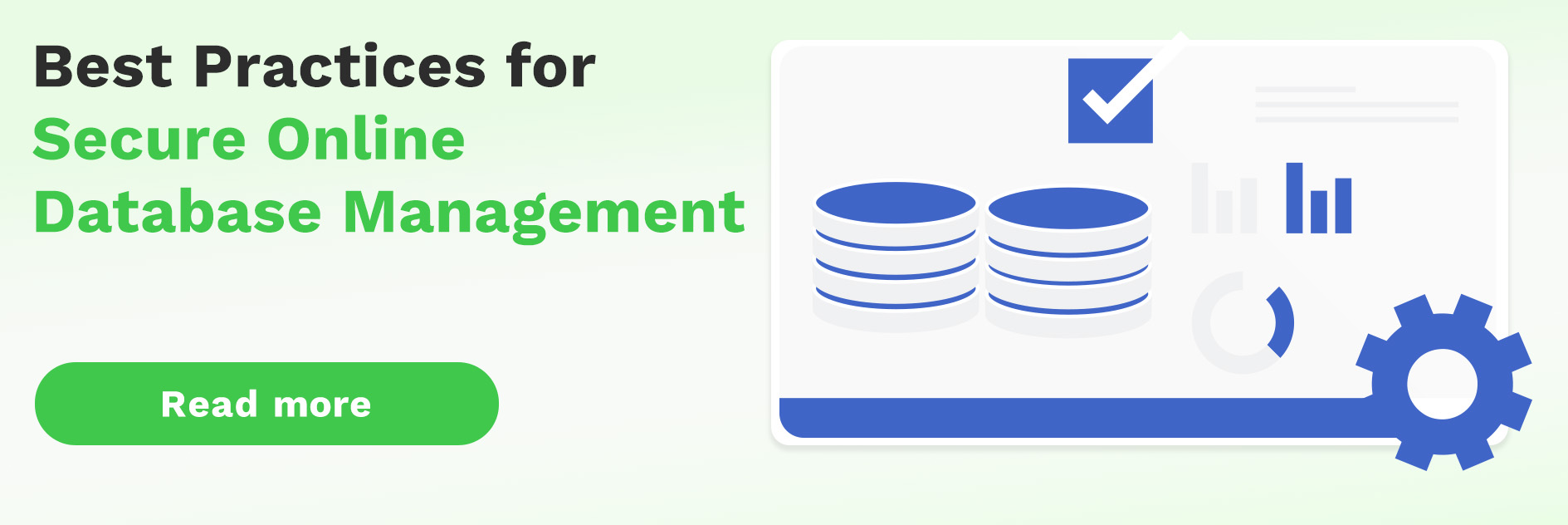Healthcare Data Management (HDM) is the backbone that supports informed decision-making, improves patient outcomes, and drives operational efficiency in healthcare. It ensures that valuable health data is not only accurately collected, but also securely stored, efficiently processed, and meaningfully interpreted.
What is Healthcare Data Management?
Healthcare Data Management (HDM) is a strategic process that involves the collection, storage, protection, and analysis of data collected from various healthcare sources. It enables healthcare providers to ensure the accuracy, accessibility, consistency, and timeliness of patient data and enhances decision-making, improving patient care, and increasing operational efficiency.
HDM encompasses the practices and tools used to maintain data privacy and security, ensuring compliance with healthcare regulations. It also makes healthcare delivery more effective and patient-centric.
The Importance of Efficient Data Handling in Healthcare
Healthcare Data Management (HDM) serves as the backbone for informed decision-making, enabling healthcare providers to offer personalized, efficient, and high-quality care. With accurate and timely patient data at their fingertips, clinicians can diagnose conditions faster and more accurately, reducing the margin for medical errors. Also, HDM eliminates redundancies, enhances productivity, and streamlines operations.
But beyond operational efficiency and improved patient outcomes, it also ensures compliance with stringent healthcare regulations, protecting sensitive patient data from breaches. As healthcare continues to evolve, embracing digital transformation, HDM stands as a critical tool that will shape the future of healthcare delivery. In essence, effective HDM isn't just beneficial—it's indispensable.
Benefits of Healthcare Data Management
Healthcare Data Management (HDM) offers a multitude of benefits that are revolutionizing healthcare delivery and operations:
- Data Accuracy and Consistency: HDM ensures the reliability of patient data, which is vital for precise diagnoses and effective treatment strategies.
- Operational Efficiency: HDM eliminates redundancies, streamlines processes, and enhances efficiency, leading to significant cost savings.
- Improved Patient Outcomes: HDM enables personalized care based on individual health data, leading to better patient outcomes.
- Predictive Analytics: HDM facilitates the use of predictive analytics, allowing healthcare professionals to anticipate health trends and prevent potential health issues.
- Data Protection and Compliance: With robust data protection measures, HDM ensures compliance with stringent healthcare regulations and safeguards sensitive patient information against breaches.

Challenges in Healthcare Data Management
As we continue to collect and generate vast amounts of health-related data, managing this sensitive information becomes increasingly complex. Here are the fundamental challenges that healthcare providers and institutions face when it comes to data management:
Security of the Data: One of the paramount concerns in healthcare data management is ensuring the security of patient information. Data must be stored confidentially while maintaining its integrity, and it should only be accessible by authorized personnel. Adhering to the US Health Insurance Portability and Accountability Act (HIPAA) regulations is critical to protect patient data from unauthorized use, cyber-attacks, and potential threats like ransomware. Implementing robust security measures such as encryption, both at rest and in transit, along with role-based access controls, safeguards this information.
Data Integration: A cohesive integration of health data from various stakeholders - patients, providers, creditors, payers, and government entities - creates a comprehensive healthcare delivery system. Clinical, operational, and financial data, merged with external sources such as population health statistics and social determinants of health, are incredibly valuable for informed decision-making. However, the integration and analysis of these varied datasets present significant challenges in terms of consistency, accuracy, and efficiency.
Catalog of Datasets: Healthcare organizations manage an array of datasets, including asset IDs, electronic medical records (EMRs), claims, electronic health records (EHRs), population health data, accounts receivables, and more. Tagging and handling this vast metadata correctly requires correct ontology and taxonomy structures. IAlso, problems such as data replication, ingestion issues, duplication, and errors can create complications that must be recognized and resolved to prevent widespread misinformation and inconsistency.
These challenges underscore the need for a strategic, comprehensive approach to healthcare data management, one that prioritizes security, integration, and accurate cataloging as fundamental components of healthcare operations.
Secure, Accessible, Healthcare Database with Kohezion
In the healthcare industry, data management is as much about accessibility as it is about security. Providers need to access health records quickly to make informed decisions about patient care but also ensure adherence to strict compliance standards. Kohezion aims to address these critical needs with a secure and accessible healthcare database solution.

Kohezion offers a platform that allows healthcare providers to create custom, no-code databases. This means that they can tailor their database to specific needs without extensive coding knowledge. Here’s how Kohezion contributes to solving healthcare database demands:
Data Security: Kohezion puts a strong emphasis on security, ensuring that all databases created with the platform are equipped with high-level encryption and adhere to best practices as per HIPAA and other regulatory standards. The privacy and confidentiality of patient data can be maintained while allowing healthcare providers secure and HIPAA-compliant access.
User Accessibility: The web-based nature of Kohezion means databases are accessible from anywhere, at any time, as long as there is an internet connection. This is critical in healthcare settings where providers may need to access data quickly, across different locations.
Customization and Flexibility: Healthcare providers often have unique needs based on their specialties, geographical location, patient demographics, and more. Kohezion allows these organizations to build a healthcare database that’s tailored to their specific requirements, without the need for complex programming.
Ease of Use: With a no-code platform, the ease of use is significantly improved. Healthcare professionals without IT expertise can navigate, manage, and update the database. This simplicity removes barriers and streamlines the process of entering and retrieving data.
Scalability: Kohezion’s scalable solutions mean that as a healthcare organization grows, the database can easily grow with it. This removes the need for costly upgrades or transitions to different database systems, which can be disruptive to operations.
Kohezion offers a secure, accessible, and flexible database option, and aims to empower healthcare providers to focus more on patient care and less on the technical aspects of data management. In the next sections, we will examine best practices that can optimize the use of such healthcare data management systems.
10 Best Practices for Healthcare Data Management
Implementing best practices for HDM can significantly enhance its efficiency and effectiveness. Follow these tips to optimize your healthcare data management strategies:
1. Define your goals and objectives
2. Develop a data governance strategy
3. Use a centralized data management system
4. Ensure data quality
5. Use data analytics tools
6. Train staff on data management best practices
7. Ensure data security and privacy
8. Use data to drive continuous improvement
9. Stay up-to-date on regulatory requirements
10. Regularly review and update your data management strategy
1. Define your goals and objectives
What are your data goals? Where are you now, and where do you want to be?
Before you start making changes or upgrading your current data management system,define your goals and objectives. What data are you collecting (i.e. insurance information, medical referrals, changes in health)? How are you going to use this data to improve patient care? Define your goals and objectives to create a clear roadmap for managing your health data, and identify what type of system best supports these goals.
2. Develop a data governance strategy
What is data governance and how can it be used to create a competitive advantage?
Data governance refers to the overall management of data within an organization, including policies, procedures, and processes that ensure the data is reliable, accurate, accessible, and usable. Data governance is a critical aspect of effective health data management, as it involves defining who is responsible for the data, what the data means, how it is used, and how it is stored and maintained.
3. Use a centralized data management system
Are you currently using multiple tools or systems to manage your data? Not only is this costly, but it has the potential to create gaps where data could get lost or stolen.
A centralized data management system can help you manage your health data more effectively. Use a single system to store and manage your data, to ensure that your data is consistent and accurate. Additionally, a centralized system can help you identify patterns and trends in your data more easily. For example, online database software can provide one centralized location to edit, manage, and share data.
4. Ensure data quality
Do you spend too much time fixing data errors and manually updating information? This has the potential to lead to data corruption, ultimately compromising the quality of your data.
Inaccurate or incomplete data can lead to incorrect diagnoses, treatments, and outcomes. To ensure data quality, establish data quality rules and procedures, and regularly audit your data to identify and correct errors. When working with software providers, check to see if built-in audit options exist to track who has made changes to what data.
5. Use data analytics tools
Are you currently utilizing analytic and visualization tools like dashboards, reports, and online forms?
Data analytics tools identify patterns, trends, and insights, and can help you make sense of your health data. These tools can help you make informed decisions about patient care, and identify opportunities for improvement.
6. Train staff on data management best practices
How many different people have a role to play in managing or handling data?
Effective health data management requires a team effort. Train your staff on data management best practices, including data entry, data quality, and data security. This way, you can ensure that everyone is working towards the same goals and that your data is managed consistently and effectively. Access controls also limit who has access to what data, so sensitive information never falls into the wrong hands.
7. Ensure data security and privacy
Are you required to be HIPAA or GDPR-compliant?
At Kohezion, security and transparency are two core values reflected in their security statement. When working with a software vendor, it’s a good idea to look into them and make sure they have safeguards (physical, technical, and administrative) in place to support your data.
Data security is about the measures and practices an organization puts in place to protect its data from both internal and external threats. Data privacy, on the other hand, is concerned with ensuring that personal data is collected, processed, and used in a way that complies with relevant data protection regulations and that individuals have control over their personal data.
Although data governance and data security/privacy go hand-in-hand, there are a few differences between them. While data governance is concerned with managing data as an organizational asset, data security and privacy is concerned with protecting that asset from threats and ensuring that individuals’ privacy rights are respected.
8. Use data to drive continuous improvement
What information do you use to make data-driven decisions?
Health data can be a powerful tool for driving continuous improvement in your healthcare organization. When you analyze your data, with tools like reports, and identify areas for improvement, you can make informed decisions about how to improve patient care, reduce costs, and increase efficiency.
9. Stay up-to-date on regulatory requirements
These regulations shape the way data is managed, which ultimately impacts the quality of healthcare. Health policies protect patient privacy and ensure data security.
As healthcare becomes increasingly reliant on digital technologies, compliance regulations continue to evolve. This makes it more important than ever to stay informed and up-to-date on changes in compliance requirements. Changes to healthcare policies also have an impact on internal procedures related to data governance and security and privacy.
10. Regularly review and update your data management strategy
Is upgrading software part of your health data management strategy?
Regularly review and update your health data management strategy. In a rapidly changing environment like healthcare, your needs and policies change, and your strategy should evolve to meet these changing needs. Regularly reviewing and updating your strategy can help you stay on track and ensure that your data management practices remain effective now, and into the future.
Managing Healthcare Data under HIPAA
The management of healthcare data falls under a set of stringent guidelines, particularly under the Health Insurance Portability and Accountability Act (HIPAA) in the United States. HIPAA sets the standard for protecting sensitive patient data and applies to all entities that deal with protected health information (PHI). The secure handling of this data not only protects patients but is also a legal obligation for healthcare providers, payers, and their business associates.
- Adhering to Privacy Regulations: HIPAA requires that healthcare data management systems incorporate safeguards to ensure the confidentiality, integrity, and availability of PHI. This implies strict control over who can access patient information and under what circumstances, along with implementing procedures for securing electronic patient records.
- Risk Assessment and Management: Regular risk assessments are necessary to identify potential vulnerabilities in how PHI is stored, processed, and transmitted. Healthcare providers must manage risks appropriately, which typically involves a combination of policies, procedures, and physical safeguards, to protect healthcare data from unauthorized access or breaches.
- Training and Awareness: Ensure that staff members are adequately trained on the provisions of HIPAA. They must understand the importance of protecting patient data, be aware of the consequences of non-compliance, and know how to properly handle and share PHI in alignment with the law.
- Breach Notification Protocol: HIPAA has specific rules in place for when a data breach occurs, including the timeframe and manner in which patients and authorities must be notified. Effective healthcare data management necessitates having a breach notification plan ready to execute in case of an incident.
- Business Associate Agreements: Healthcare organizations frequently work with third-party service providers or business associates who may have access to PHI. Under HIPAA, these associates are also obligated to protect the information they handle, and it is necessary to have signed agreements detailing their commitment to preserving the privacy and security of patient data.
Managing healthcare data under HIPAA is both a requisite and a cornerstone of patient trust. Keeping abreast of the act's evolving requirements and implementing a thorough compliance program are vital components of responsible healthcare data management in today's technological and regulatory landscape.
EHR and HCRM as a part of Healthcare Data Storage
The adoption of advanced data storage solutions is not just a technological upgrade, it is a transformation in how healthcare providers engage with, maintain, and utilize patient information to enhance outcomes. Two important components of modern healthcare data management are Electronic Health Records (EHRs) and Health Care Customer Relationship Management (HCRM) systems. These technologies serve as foundational elements for a streamlined and effective data storage strategy.
Electronic Health Records (EHRs) go beyond the basic functionalities of traditional paper records. They allow for real-time, patient-centered records that make information available instantly and securely to authorized users. EHRs focus on the total health of the patient, going beyond standard clinical data and encompassing a broader view of a patient’s care.
Health Care Customer Relationship Management (HCRM) systems, on the other hand, offer healthcare organizations the tools to better understand and anticipate the needs of their patients. HCRMs combine the detailed medical data from EHRs with interaction data from various touchpoints and empower providers with a full spectrum view of patient interactions, enabling personalized communication and enhancing patient engagement and satisfaction.
Both EHRs and HCRMs represent significant advancements in healthcare data storage, and they perform at their best when employed together. They act as complementary systems that consolidate disparate data sources, streamline workflow, and facilitate the secure sharing of information across the entire care continuum. In the subsequent segments, we explore the benefits of utilizing these integrated systems in contemporary healthcare data management strategies.
Benefits of Using Electronic Health Records
Electronic Health Records (EHRs) ensure real-time, secure patient records and revolutionize healthcare. These streamline processes, reduce errors, and improve efficiency. They foster better communication among providers, promoting coordinated care. EHRs track data over time, aiding in monitoring and preventive care. They support evidence-based decisions, leading to improved outcomes. Finally, they empower patients, fostering engagement in their health journey.
Benefits of Using Health Care Customer Relationship Management Systems
Health Care Customer Relationship Management (CRM) systems enhance communication, centralize data for personalized care, and manage appointments efficiently. They identify patient needs, tailor services and support marketing efforts. CRM systems also facilitate feedback collection to improve services. CRM systems foster better relationships and increase patient satisfaction and loyalty, transforming the healthcare experience.
Manage Healthcare Data Effectively with Kohezion
Managing healthcare data doesn't have to be a daunting task. With Kohezion, you can streamline your processes, enhance patient communication, and customize care according to individual needs. It's more than just a CRM system; it's a tool that allows you to collect feedback, improve services, and build stronger relationships with your patients.
With Kohezion, you're not only investing in an efficient data management system, but also committing to a higher level of patient satisfaction and loyalty. Manage your healthcare data effectively with Kohezion, and propel your practice into the future of healthcare.
Start building with a free account
Frequently Asked Questions
Healthcare data management centralizes health history and poreferences, enabling personalized treatment. It streamlines communication, manages appointments efficiently, and supports tailored marketing efforts, leading to improved patient satisfaction and loyalty.
Data management systems provide actionable insights from patient data, facilitating effective treatments. They enable real-time tracking of patient health, early detection of risks, and timely interventions.
The key challenges include ensuring data privacy and security, integrating disparate data sources, maintaining data quality, complying with regulations, and managing the high volume of data generated in healthcare settings.



